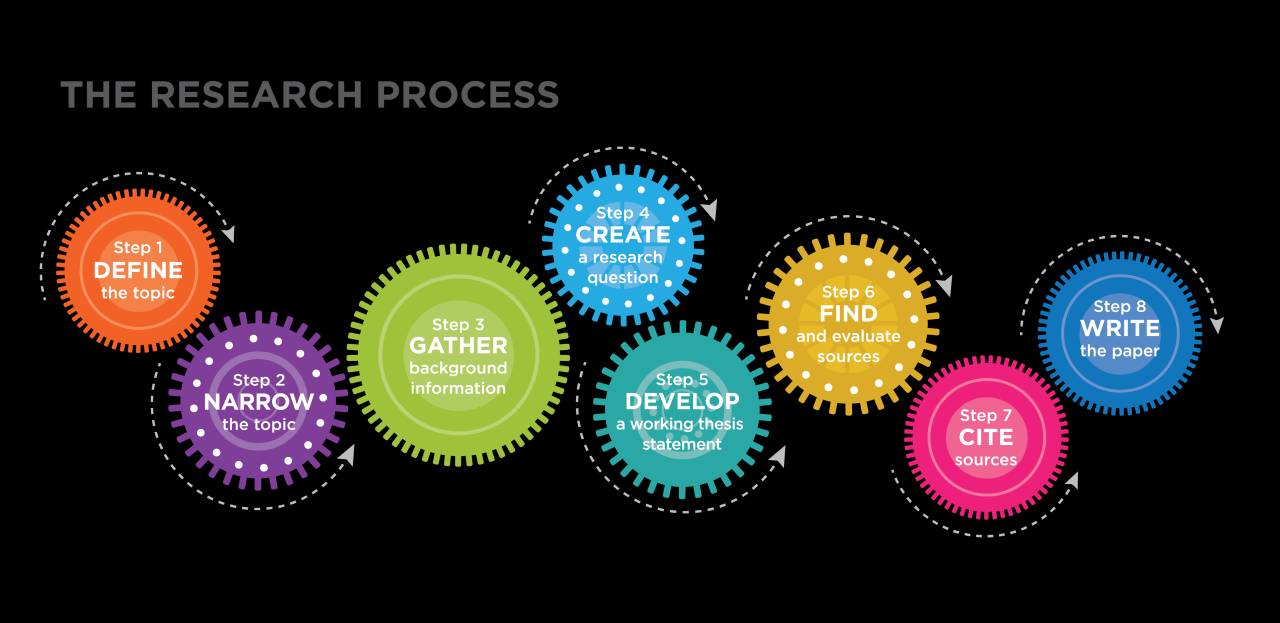Crafting an authentic speaking style is a journey of self-discovery and adaptation. It’s not about mimicking others, but rather about understanding your unique communication strengths and weaknesses, and tailoring your approach to diverse audiences and situations. This guide will walk you through the key steps to developing a voice that is genuine, impactful, and resonant.
From understanding the essence of authenticity in communication to refining your communication tools, this guide will provide practical strategies and actionable steps to enhance your speaking style. This involves recognizing your personal communication style, adapting to various audiences, and leveraging your unique voice to achieve effective communication.
Understanding Authenticity in Speaking

Authenticity in speaking is more than just sounding natural; it’s about conveying your true self and unique perspective. It involves aligning your communication with your values, beliefs, and experiences, creating a genuine connection with your audience. This approach fosters trust and engagement, making your message more impactful and memorable.Authenticity in communication is not a fixed trait but a conscious choice and a skill to be developed.
It requires understanding your own communication style, identifying potential biases or influences, and consciously choosing to speak from a place of genuine conviction. By embracing authenticity, you can transform your speaking style from a mere presentation of information to a powerful and relatable exchange.
Defining Authentic Speaking Style
An authentic speaking style is characterized by genuine expression, reflecting the speaker’s unique perspective and values. It’s not about mimicking others but rather about articulating thoughts and ideas with sincerity and conviction. Authenticity involves transparency, allowing your personality to shine through while maintaining clarity and effectiveness in conveying your message.
Authenticity vs. Mimicry
Mimicry in communication involves adopting the speaking style of others, often without fully understanding or internalizing the message. Authenticity, conversely, involves expressing your own ideas and beliefs, using your own voice and perspective. While mimicking certain aspects of style can be helpful for learning, true authenticity demands speaking from a place of genuine understanding and conviction. Mimicry often results in a lack of depth and impact, whereas authenticity resonates with listeners on a deeper level.
Examples of Authentic and Inauthentic Speaking Styles
Authenticity manifests differently across various contexts. In a formal presentation, an authentic speaker would draw on their expertise and experience to convey their ideas with conviction and clarity. In a casual conversation, authenticity involves expressing your thoughts and feelings honestly and respectfully, showing genuine interest in the other person. In public speaking, an authentic speaker connects with the audience by sharing personal anecdotes or experiences relevant to the topic, thus building trust and relatability.
Conversely, an inauthentic speaker in a formal setting might resort to clichés or jargon without true understanding. In a casual conversation, they might struggle to articulate their thoughts or appear disengaged. In public speaking, a speaker may sound rehearsed and unconvincing, lacking genuine connection with the audience.
Comparing and Contrasting Authentic and Inauthentic Communication
| Characteristic | Authentic Communication | Inauthentic Communication |
|---|---|---|
| Voice | Unique, reflective of the speaker’s personality and perspective | Mimicking others, lacking a distinct voice |
| Message | Clear, concise, and deeply personal; conveying true beliefs and experiences | Superficial, lacking conviction, often relying on clichés |
| Delivery | Engaging, confident, and relatable; adapting to the audience | Rehearsed, mechanical, and detached; failing to connect with the audience |
| Connection | Builds trust and rapport with the audience | Creates distance and distrust; fails to establish a genuine connection |
| Impact | Memorable and impactful; resonates with the audience on an emotional level | Unmemorable and uninspiring; fails to leave a lasting impression |
Identifying Personal Communication Style
Understanding your personal communication style is crucial for developing an authentic speaking style. It allows you to recognize your strengths and weaknesses, enabling you to adapt and improve your delivery. Self-awareness in this area is essential for connecting effectively with your audience and conveying your message with clarity and impact.Identifying and analyzing your current speaking style involves introspection and observation.
By understanding the key characteristics of your communication, you can better tailor your approach to different audiences and situations. This understanding will facilitate more effective and impactful interactions.
Key Characteristics of Your Speaking Style
A thorough self-assessment is vital to pinpoint the key characteristics of your speaking style. This includes examining factors such as your tone of voice, pacing, use of language, and body language. Consider how these elements combine to create your unique communication style. For example, a fast-paced delivery might be engaging for some audiences but could leave others feeling overwhelmed.
- Tone of Voice: Analyze the emotional tone you typically use when speaking. Is it warm and inviting, or more formal and reserved? Do you use vocal inflections to emphasize points, or is your tone monotonous? Recognizing the emotional coloring of your voice can reveal insights into your personal communication style.
- Pacing and Rhythm: Observe how quickly or slowly you speak. Do you pause strategically to create emphasis, or do you rush through your points? The rhythm and pacing of your speech can significantly impact audience engagement. A speaker who speaks too quickly might lose their audience, while one who speaks too slowly may seem uninspired.
- Language Use: Evaluate the type of language you use. Do you prefer formal or informal language? Do you use vivid imagery or straightforward explanations? The language choices you make reflect your communication style and influence how your message is received.
- Body Language: Notice your posture, gestures, and eye contact. Do you maintain consistent eye contact, or do you avoid it? How do your gestures complement your speech? Your body language plays a critical role in conveying confidence and authenticity to your audience.
Strengths and Weaknesses of Your Current Style
Identifying your strengths and weaknesses is essential for improvement. Strengths can be leveraged, while weaknesses can be addressed through practice and self-improvement.
- Strengths: Consider aspects of your speaking style that resonate positively with your audience. Do you connect well with people, or are you particularly skilled at conveying complex information in a simple manner? These strengths are valuable assets to your communication toolkit.
- Weaknesses: Acknowledge areas where your communication style could be improved. Are you prone to speaking too quickly, or do you struggle to maintain eye contact? Identifying these weaknesses allows for targeted improvement.
Impact on Audience
Understanding how your current speaking style impacts your audience is crucial. Analyze the reactions you observe, whether positive or negative. This feedback can be used to adjust your approach and ensure your communication is effective and engaging.
- Positive Impact: Note the positive reactions you receive from your audience. Are they engaged, attentive, and responsive? These positive responses are indicators of your strengths.
- Negative Impact: Observe instances where your speaking style may have been less effective. Are your listeners disengaged, confused, or bored? Analyzing these negative reactions can reveal areas for improvement.
Summary of Communication Style
This table summarizes the key elements of your communication style.
| Element | Description | Strengths | Weaknesses |
|---|---|---|---|
| Tone of Voice | Emotional quality of your voice | Warmth, Enthusiasm | Monotony, Inconsistency |
| Pacing and Rhythm | Speed and pauses in your speech | Emphasis, Engagement | Overwhelm, Monotony |
| Language Use | Formal/Informal, Imagery | Clarity, Vividness | Ambiguity, Lack of Detail |
| Body Language | Posture, Gestures, Eye Contact | Confidence, Engagement | Distraction, Inconsistency |
Recognizing and Adapting to Different Audiences
![[转载]Kinect for Windows SDK 1.5 的改进及新特性-Mikel [转载]Kinect for Windows SDK 1.5 的改进及新特性-Mikel](https://langkit.web.id/wp-content/uploads/2025/09/agenda31jul-1536x864-1.png)
Effective communication transcends simply conveying information; it involves tailoring your message to resonate with the specific audience. Recognizing and adapting your speaking style to different audiences is crucial for building rapport, establishing credibility, and achieving your communication objectives. This adaptability allows you to connect with diverse groups and leave a lasting positive impression.Understanding how your speaking style changes across different audiences is key to successful communication.
This requires self-awareness of your communication preferences and how these preferences shift based on the context and relationship dynamics.
Analyzing Speaking Style Changes Based on Audience
A speaker’s style often adjusts based on the audience’s background, level of knowledge, and expectations. A formal presentation to a group of experts will differ significantly from a casual conversation with friends. The formality of language, tone, and pace all need to be adjusted to suit the audience’s comfort level and the specific communication goal. The speaker needs to carefully assess the context to deliver an effective and engaging message.
Comparing Communication with Different Groups
Communication with colleagues, friends, and superiors necessitates different approaches. With colleagues, a professional yet approachable tone is often effective, fostering collaboration and teamwork. When interacting with friends, a more relaxed and informal style can build stronger personal connections. Communicating with superiors requires a respectful and professional approach, emphasizing clarity and demonstrating respect for their authority. These variations in communication styles are intentional and driven by the need to create a positive impression and achieve the desired outcome.
Examples of Adapting Speaking Style to Specific Situations
Consider a presentation to potential investors. A formal, data-driven presentation with a confident and assured tone is crucial. However, during a casual meeting with colleagues, a more collaborative and interactive approach would be more suitable. Adaptability involves understanding the context and choosing the appropriate style to maximize effectiveness.
Table: Tailoring Speaking Style for Various Audiences and Contexts
| Audience/Context | Speaking Style | Tone | Language | Pace |
|---|---|---|---|---|
| Formal presentation to experts | Structured, detailed | Confident, authoritative | Precise, technical | Measured, deliberate |
| Meeting with colleagues | Collaborative, interactive | Enthusiastic, approachable | Clear, concise | Moderate, conversational |
| Conversation with friends | Casual, relaxed | Friendly, engaging | Informal, conversational | Fast-paced, lively |
| Presenting to potential clients | Persuasive, engaging | Enthusiastic, confident | Clear, compelling | Dynamic, persuasive |
| Addressing a large public gathering | Enthusiastic, inspiring | Passionate, engaging | Clear, impactful | Energetic, motivating |
Refining Your Communication Tools

Developing an authentic speaking style hinges on effectively utilizing the tools of communication. This involves carefully considering your vocabulary, tone, and pacing to ensure your message resonates with your audience. A well-chosen word, a thoughtfully modulated tone, and a strategic delivery can significantly enhance your impact and create a more genuine connection with listeners.Effective communication is more than just conveying information; it’s about connecting with the audience on an emotional level.
By mastering these fundamental communication tools, you can tailor your delivery to resonate with diverse audiences and leave a lasting impression. This refined approach to communication is key to developing an authentic and impactful speaking style.
Vocabulary Selection
Careful consideration of vocabulary is crucial for establishing authenticity. The appropriate vocabulary level directly impacts how your message is perceived and understood. Using language that aligns with your audience’s knowledge and expectations fosters trust and engagement. Employing overly technical terms with a lay audience can lead to confusion and disengagement, while overly simplistic language with an expert audience can appear dismissive or unprofessional.
- Formal vs. Informal Language: In professional settings, formal language is typically expected. However, informal language can be suitable in casual settings or when addressing a younger audience. Maintaining consistency in your chosen style is key.
- Jargon and Technical Terms: Use jargon or technical terms judiciously. Clearly define these terms when necessary to ensure understanding. When addressing a mixed audience, consider providing brief explanations to prevent confusion.
- Active vs. Passive Voice: Choosing the active voice often leads to more direct and impactful communication. The passive voice, while sometimes appropriate, can make your speech sound indirect and less engaging.
Tone and Emotional Expression
Your tone of voice is a powerful tool for conveying emotions and intentions. Adjusting your tone to match the situation and your message creates a more engaging and authentic experience for the listener. This nuanced approach fosters a deeper connection and strengthens your impact. Authenticity often stems from a thoughtful consideration of how your tone reflects your emotions and intentions.
- Empathy and Understanding: Conveying empathy and understanding through your tone can significantly improve audience engagement and connection. A genuine tone of empathy can foster trust and rapport with listeners.
- Confidence and Enthusiasm: Communicating with confidence and enthusiasm is essential for maintaining audience interest. Confidence is infectious and can inspire your listeners.
- Humor and Playfulness: Using humor and playfulness can be effective, but only when appropriate. A well-placed joke can lighten the mood and enhance engagement, but humor must be delivered naturally and with sensitivity.
Pacing and Rhythm
Pacing and rhythm are vital for maintaining audience engagement and understanding. Adjusting your speaking speed and incorporating pauses can emphasize key points and create a more impactful delivery. Varying your pacing also adds dynamism and keeps the audience attentive.
- Emphasis on Key Points: Slowing down when delivering crucial information allows listeners to absorb and process the message effectively. Pauses can be used strategically to emphasize key points.
- Avoiding Monotony: Varying your speaking speed and tone prevents monotony. This variation keeps the audience engaged and helps maintain their focus.
- Natural Pauses: Using natural pauses between sentences or ideas allows listeners to process the information and maintain concentration.
Vocabulary Level Table
| Vocabulary Level | Appropriate Use | Example Scenarios |
|---|---|---|
| Formal | Professional presentations, academic settings, legal documents | Business meetings, conferences, academic lectures |
| Semi-formal | Discussions with colleagues, informal presentations | Team meetings, internal reports, training sessions |
| Informal | Casual conversations, social settings, addressing younger audiences | Social gatherings, informal training sessions, team building activities |
Embracing Your Unique Voice
Finding and utilizing your unique voice in communication is a crucial aspect of authentic speaking. It’s not merely about projecting your thoughts; it’s about expressing them with a distinct personality and style that resonates with your audience. This involves understanding your personal communication style, recognizing your strengths, and strategically leveraging your personal experiences and perspectives. This process fosters confidence and self-awareness, enabling you to overcome communication anxieties and inhibitions.Authenticity in speaking is not a one-size-fits-all approach; it’s a deeply personal journey of self-discovery.
It requires acknowledging your strengths, embracing your weaknesses, and consistently refining your approach. This process involves a combination of understanding your unique communication style, acknowledging your experiences, and developing strategies to address any anxieties that may arise.
Identifying Your Unique Communication Style
Understanding your communication style involves self-reflection and acknowledging your tendencies. Are you a detailed speaker, a storyteller, or a concise communicator? Identifying these patterns allows you to consciously shape your delivery. Recognizing your strengths and weaknesses allows for the strategic application of various communication tools and techniques.
Leveraging Personal Experiences and Perspectives
Your experiences and perspectives provide a rich tapestry of material for your communication. Sharing personal anecdotes, stories, and insights can make your speaking more relatable and memorable. For example, a speaker discussing the challenges of starting a business might share a specific anecdote about a personal struggle and eventual success. This personal touch creates a deeper connection with the audience.
Remember, however, that the focus should always be on the relevance of the story to the message being conveyed.
Cultivating Confidence and Self-Awareness
Confidence in your speaking is directly linked to self-awareness. Understanding your strengths, weaknesses, and communication style builds a foundation for authentic delivery. A speaker who recognizes their tendency to rush through points, for example, can consciously slow down and articulate their thoughts more clearly. This self-awareness allows for conscious control of communication flow. Practicing mindfulness and positive self-talk can also be beneficial in building confidence and reducing anxiety.
Overcoming Communication Anxieties and Inhibitions
Communication anxieties are common, but they can be overcome. Strategies like deep breathing exercises, visualization techniques, and practicing in front of a mirror can help. Identifying the source of the anxiety—is it fear of judgment, fear of failure, or something else—is crucial to developing targeted solutions. Furthermore, building a supportive network of mentors and peers can provide encouragement and feedback, bolstering confidence.
Developing a Framework for Your Unique Speaking Style
A framework for identifying and showcasing your unique speaking style involves several key elements. First, identify your preferred communication style. Are you passionate, analytical, or empathetic? Next, select a few key experiences that best illustrate your perspective and personality. Then, tailor your delivery to effectively incorporate these elements.
For instance, if you are a passionate speaker, emphasize enthusiasm and energy in your delivery. Consistently practicing and receiving constructive feedback will refine and strengthen your unique style. This framework is a guide, not a rigid formula, allowing for flexibility and adaptation. A final element is regular practice. Presenting in front of friends, colleagues, or even small groups can build confidence and refine delivery.
Continuous Improvement and Feedback

Developing an authentic speaking style is not a one-time achievement; it’s an ongoing journey of refinement. Consistent self-assessment and feedback are crucial for progress. Seeking out constructive criticism allows you to identify areas for improvement and refine your communication strategies.Effective communication relies on understanding how your style impacts others. Feedback provides invaluable insight into how your delivery resonates with different audiences.
This understanding is essential for tailoring your approach and ensuring your message is effectively conveyed.
Importance of Seeking and Receiving Feedback
Seeking and receiving feedback is essential for growth in any area, including public speaking. Constructive criticism, when properly utilized, can illuminate blind spots in your communication style and lead to significant improvements. This feedback can reveal aspects of your delivery that are not apparent to you, such as pacing, tone, or body language. Recognizing these areas allows for targeted adjustments and ultimately leads to more effective communication.
Methods for Effectively Asking for Constructive Criticism
Asking for constructive criticism requires a proactive and open approach. Frame your request clearly, emphasizing your desire for genuine and helpful feedback. Instead of asking “What do you think?”, try a more specific approach such as, “I’d appreciate feedback on how I can better connect with the audience during the Q&A session. Could you provide some specific examples?” This direct and focused request helps ensure that you receive relevant and actionable feedback.
Strategies for Using Feedback to Improve Speaking Style
Feedback is not just about identifying weaknesses; it’s also about recognizing strengths. When evaluating feedback, analyze each point carefully. Determine whether the comment is specific, actionable, and helpful. If a comment is vague, ask for clarification. Don’t be afraid to ask follow-up questions to gain a deeper understanding of the feedback’s implications.
Consider the context in which the feedback was given and tailor your response accordingly. If the feedback is general, seek more specific examples. Separate helpful comments from those that may be subjective or irrelevant.
Incorporating Feedback into Your Communication Process
Feedback should not be a one-time event but an integral part of your communication process. After receiving feedback, reflect on the suggestions and identify specific areas for improvement. Develop a plan for incorporating these suggestions into your future speaking engagements. For instance, if feedback suggests a need for more concise language, practice summarizing key points before delivering your speech.
Experiment with different approaches and adapt your delivery accordingly. Note the positive aspects of the feedback too, as these aspects represent strengths you can build on.
Feedback Solicitation, Reception, and Application Process
| Step | Solicitation | Reception | Application |
|---|---|---|---|
| 1 | Clearly define the specific area for feedback (e.g., clarity of message, audience engagement). | Actively listen to the feedback, avoiding defensiveness. | Prioritize feedback based on its relevance and impact. |
| 2 | Request feedback from trusted sources (e.g., mentors, colleagues, peers). | Ask clarifying questions if the feedback is unclear or ambiguous. | Develop a plan to implement the feedback in your next speech or presentation. |
| 3 | Frame the request in a positive and collaborative manner. | Separate constructive criticism from personal opinions. | Document the feedback and its implementation for future reference. |
| 4 | Provide context for the feedback request (e.g., upcoming presentation, specific speech section). | Evaluate the feedback’s impact on your speaking style. | Track your progress and adjust your strategies as needed. |
Adapting to Specific Speaking Situations

Crafting an authentic speaking style involves not only understanding your voice but also recognizing the nuances of different communication settings. Effective communication hinges on the ability to adapt your delivery and approach to resonate with the specific audience and context. This adaptability fosters stronger connections and ensures your message is received with clarity and impact.Adapting your speaking style for various situations allows you to connect more deeply with your audience, demonstrating a genuine understanding of their needs and expectations.
This approach showcases your awareness and consideration, further enhancing your credibility and overall effectiveness as a communicator.
Tailoring Style for Different Speaking Situations
A key element of effective communication is tailoring your speaking style to the specific situation. This involves considering the audience’s background, expectations, and the overall context of the interaction. Different contexts require varying levels of formality, enthusiasm, and detail.
- Presentations: For presentations, a clear, structured approach is crucial. Use concise language, compelling visuals, and maintain a consistent pace. Eye contact and engaging body language are vital for holding the audience’s attention and fostering a sense of connection.
- Interviews: Interviews demand a professional and composed demeanor. Speak clearly and concisely, answering questions directly and thoroughly. Maintain a positive and enthusiastic tone, even if the questions are challenging. Practice active listening to understand the interviewer’s perspective and adjust your responses accordingly.
- Small Talk: Small talk necessitates a friendly and approachable style. Use open-ended questions, listen actively to responses, and maintain a lighthearted tone. Avoid overly technical or complex language. Maintain a relaxed posture and engaging facial expressions.
- Persuasive Speaking: When aiming to persuade, consider using emotionally evocative language, compelling stories, and strong arguments. Present evidence and support your claims with facts and logical reasoning. Maintain a passionate and confident tone to inspire and motivate your audience.
- Informative Speaking: For informative speeches, clarity and accuracy are paramount. Use precise language, avoid jargon, and provide sufficient detail to ensure the audience understands the information. A structured and organized approach helps to present complex information in a digestible manner.
Adapting for Online Versus In-Person Interactions
Online interactions present unique challenges compared to in-person communication. The absence of nonverbal cues requires extra effort to convey meaning and maintain engagement.
- Online Interactions: For online interactions, clarity and conciseness are even more crucial. Be mindful of potential misunderstandings that can arise from the lack of visual cues. Use clear and concise language, and consider employing visuals and interactive elements to enhance engagement.
- In-Person Interactions: In-person interactions benefit from the richness of nonverbal communication. Use appropriate body language, maintain eye contact, and adjust your tone to match the atmosphere. Be attentive to audience feedback and adjust your delivery accordingly.
Examples of Adjusting Your Speaking Style
Adapting your style involves adjusting your tone, pace, and language based on the situation.
| Situation | Speaking Style Adjustments |
|---|---|
| Presentation | Concise language, structured approach, engaging visuals, consistent pace |
| Interview | Professional, composed, clear and concise answers, positive and enthusiastic tone |
| Persuasive Speech | Emotionally evocative language, compelling stories, strong arguments, passionate and confident tone |
| Informative Speech | Precise language, clear explanations, structured organization, sufficient detail |
Ending Remarks
In conclusion, developing an authentic speaking style is a multifaceted process requiring self-awareness, adaptability, and continuous improvement. By understanding your unique voice, recognizing your audience, and refining your communication tools, you can cultivate a speaking style that resonates with your listeners and allows you to connect with them on a deeper level. Remember, authenticity is about being true to yourself while adapting to different contexts and situations.